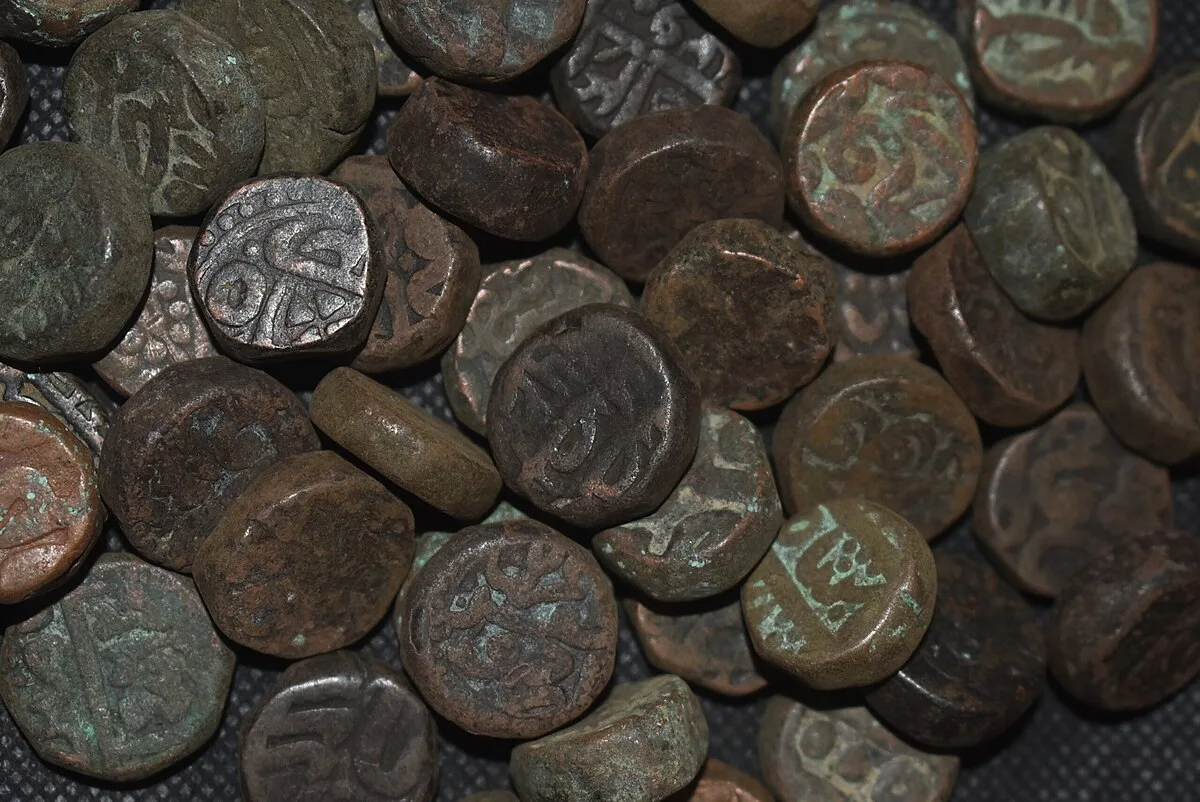A significant hoard of Mughal-era coins was recently unearthed by construction workers in Chaubara, a town in the Indian state of Uttar Pradesh.
Up on the discovery the workers initially intended to distribute the coins among themselves, but news of the find quickly spread, drawing a crowd of enthusiastic treasure seekers to the site. The commotion attracted the attention of local authorities, who promptly intervened, seizing the hoard and informing archaeologists from the state’s Archaeology Department.
The collection comprises 49 coins from the Mughal era, which spanned from AD 1526 to 1857. At its height, the Mughal Empire extended from Afghanistan in the northwest, Kashmir in the north to the Deccan Plateau in South India.
Some of the coins bear inscriptions in Persian. Persian was widely used as an official language in the Mughal Empire, with the word “Mughal” itself representing the Indo-Persian adaptation of “Mongol.” The empire was established in 1526 by Babur, a descendant of Timur and Genghis Khan through his paternal and maternal lineage.
Although the coins are yet to undergo thorough examination, some inscriptions mention Mirza Shahab-ud-Din Muhammad Khurram, better known as Shah Jahan I, the fifth Mughal emperor who ruled from 1628 to 1658. Other coins appear to reference Mirza Nasir-ud-Din Muhammad Shah, the thirteenth emperor, who reigned from 1719 to 1748.
Authorities have stated that the coins will be stored securely in the Fatehpur police station treasury before being transferred to the Archaeology Department for detailed study and preservation.
